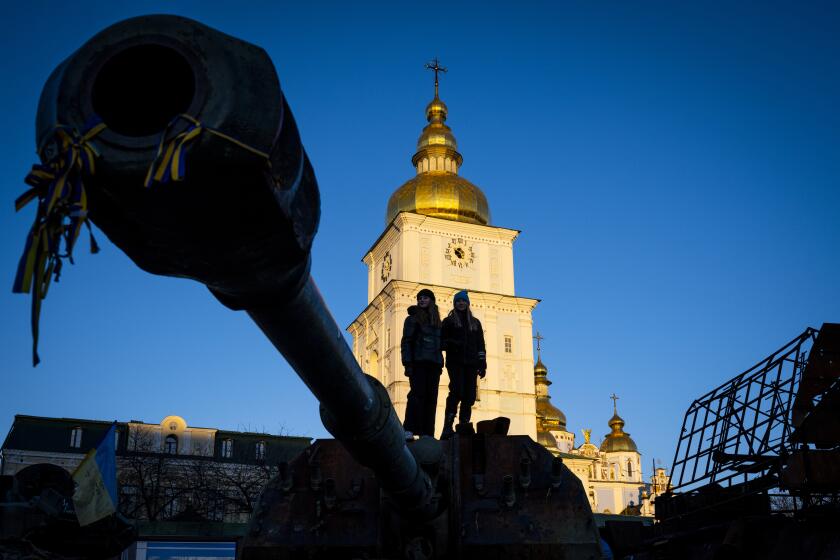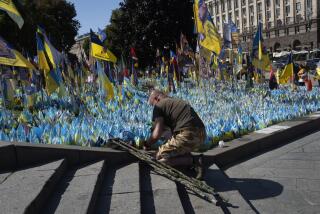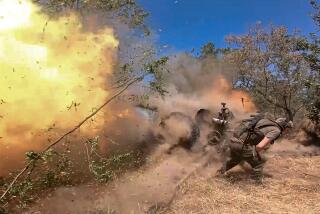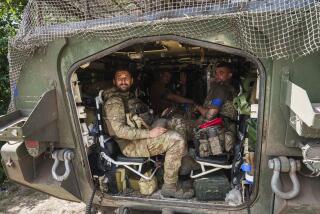One year after liberation, Ukrainians in Kherson hold on to hope amid constant shelling
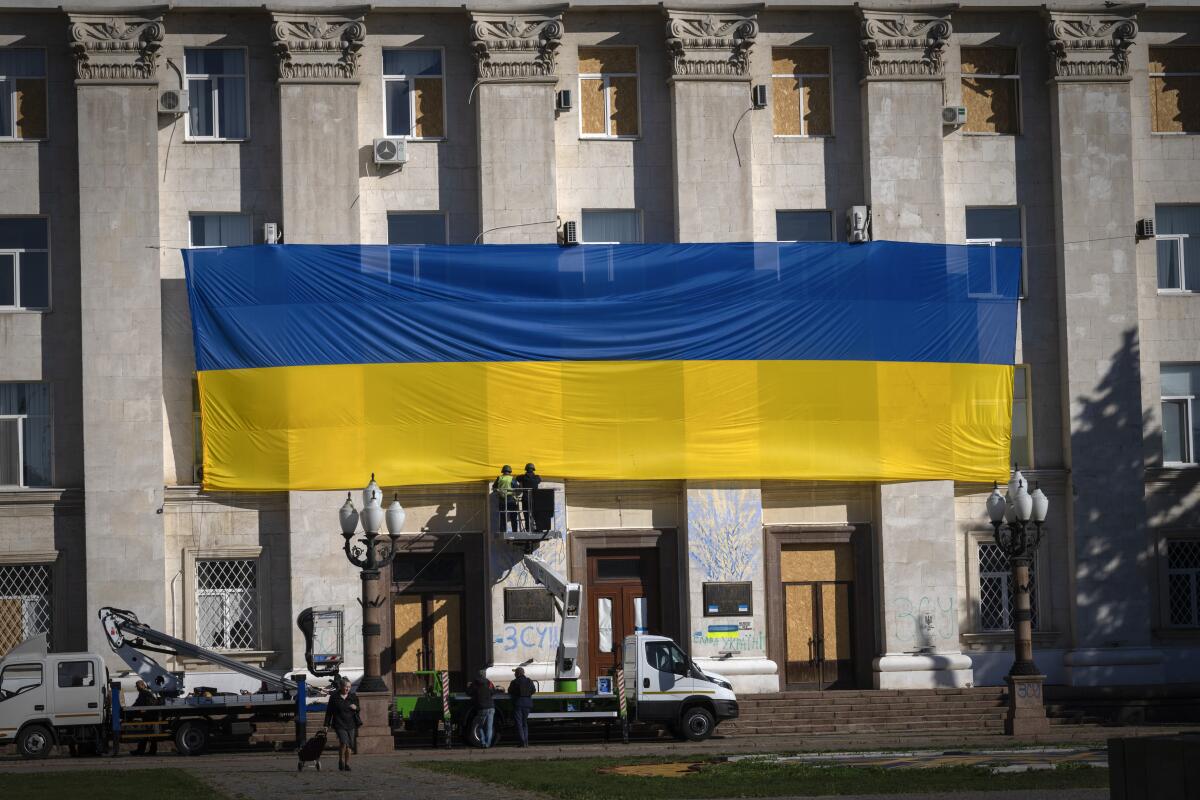
KHERSON, Ukraine — One year since Ukraine retook the city of Kherson from occupying Russian forces, residents have grown accustomed to hearing outgoing fire from the left bank of the Dnipro River, where Russian troops are positioned. They know that familiar crackle means they have seven seconds to find shelter, or a sturdy wall to hide behind.
Their lives are mostly limited to the comfort of home and the necessity of the supermarket. Many shops are still closed. Municipal workers wear bullet-proof vests and wait to be dispatched to sweep up the rubble from yet another impact.
Between lulls of artillery fire coming from the river, which marks the contact line between battling armies in the Kherson region, Ukrainians venture out to buy food, bicycle down grassy residential lanes or convene in the few restaurants that dare to remain open.
Marking the anniversary of Russia’s defeat on Nov. 11 is a bittersweet occasion, many residents say, as Ukraine’s counteroffensive grinds on without producing the spectacular gains many had hoped for. But those who stay are steadfast in their belief that one day normal life will return.
War wounds and traumatic captivity, cherry liqueur and air-raid alerts: Weathering the year-old Russian invasion
“When you have lived under occupation, you know what freedom means,” said Grigori Malov, who owns one out of three restaurants still operating in the city. “It’s why we have a special attitude toward the continued shelling. We can withstand it because we know how it could be worse.”
The flight of Russian troops from Kherson under prolonged Ukrainian assault a year ago was one of Ukraine’s biggest successes of the war and was seen as an inflection point.
President Volodymyr Zelensky triumphantly walked the streets of the newly liberated city back then, hailing Russia’s withdrawal as the “beginning of the end of the war.” Many hoped it would serve as a springboard for more advances into occupied territory.
Today, both sides are locked in a stalemated battle of attrition.
On Saturday, a rainy and cloudy day, the atmosphere was muted and few residents came out to mark the occasion, fearing Russian attacks. A small group came draped in Ukrainian flags and stood for a while at a monument in front of the administrative building, then walked away.
Malov didn’t work during the nine months he lived under Russian occupation. After the city returned to Ukrainian control, he opened his eatery, which contains a cafe on the top floor and a restaurant in the basement, to help bring the city back to life. Residents celebrate birthdays, clinking glasses, as the fighting continues a few miles away.
Ukrainian soldiers, resting between front-line stints, are frequent patrons. They come to Malov’s restaurant to eat bowls of pasta or cheesy pizzas and to share a laugh. Sometimes Malov rganizes stand-up comedy nights, when he can find an entertainer.
“I think we are fulfilling an important function. We are giving people the opportunity to relax,” he said. “Now it’s even more important than before.”
The sounds of incoming and outgoing fire resound continuously and residents have to organize their days in anticipation of them. They are most frequent in the morning and late afternoon, residents said. Air raid alarms echo almost incessantly, at all hours of the day.
Between 40 and 80 shells of different varieties land in Kherson city on a daily basis, said Oleksandr Tolokonnikov, a spokesperson for the Kherson regional administration.
“Every day people must take into consideration the shelling,” he said.
Tolokonnikov was in the city on Nov. 12, one day after it was retaken, and recalled the joy of the crowds welcoming Ukrainian forces back. A few days later, the shelling started, and it hasn’t stopped since, he said.
Security concerns aside, he says earning an income is another challenge for Ukrainians living in Kherson. There are no jobs for the nearly 71,000 residents in the city, which had a prewar population of 300,000. Most of those who remain are elderly, he said.
Dmytro and Olena were a rare sight: a young couple on a date. They went to the Kherson regional administrative building to hold up the Ukrainian flag and take photos ahead of the anniversary of the city’s liberation.
“It’s not safe in the city, maybe, but we are at home, we don’t want to move anywhere else,” said Olena. “We are spending time at home, we are trying to live, work and not leave.”
They spoke on condition that only their first names be used because they feared Russian reprisals.
Konstantin Krupenko supervised municipal workers as they cleaned the streets, clearing fallen autumn leaves ahead of the anniversary celebration. The men wore bulletproof vests, smoking in between hauling bags of foliage. Over the summer, Krupenko lost one of his workers who was struck by shrapnel from a Grad rocket. Another worker suffered a concussion.
Clearing leaves is an unusual task for municipal workers in Kherson, Krupenko said. Usually they are dispatched to remove rubble from explosion sites.
“Sometimes it’s big, sometimes it’s smaller, on houses,” he said, matter-of-factly describing their work routine. “Day after every day, there is something.”
More to Read
Sign up for Essential California
The most important California stories and recommendations in your inbox every morning.
You may occasionally receive promotional content from the Los Angeles Times.
